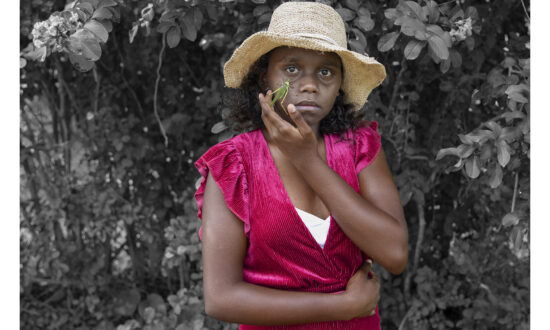The Children’s Artspace is next to the revamped Festival Plaza precinct, which is being officially launched this weekend with a program of family-friendly events. The gallery itself opens tomorrow and will present a fresh art exhibition each school term.
“Essentially, the creation of Children’s Artspace was made to engage South Australian students with professional artists so that art becomes a large part of the curriculum again,” says head curator Alice Dilger.
“It’s rare, when art is provided in school, that the results the students produce become an external exhibition or any exhibition at all, so we wanted to see a space in the city centre where all the art is produced by kids, for kids.”
Each exhibition in the space will feature artwork created during workshops run in schools across the state. The workshops will be designed and led by Adelaide Central School of Art graduates.
The opening exhibition at Children’s Artspace, Kaleidoscope: Playing with Colour, is an exploration of abstract and contemporary art – something to which children wouldn’t normally be exposed.
South Australian artist Ruby Chew was the mentoring artist for Kaleidoscope, working with students from Keller Road Primary School and Hackham West R-7 School to create the pieces on display.
“It [Kaleidoscope] extends to both the humanities and the STEM curriculum, so we are connecting that creativity and imaginative problem-solving skills across subjects so that art really extends into science and math and all the other subjects,” says Dilger.

Children’s Artspace head curator Alice Dilger and mentoring artist Ruby Chew. Photo: Naomi Jellicoe
While Children’s Artspace is about giving students the opportunity to produce work, it is also about engaging children in conversations about creativity.
“Students who come and see the exhibition will be able to have discussions with their families or with their friends about why they like art, about why they don’t like this particular piece of art, and about what abstract art is.”
Textiles, sculpture and digital design are among other media that will be exhibited throughout the year. Because the artists are school children – the program is aimed at students from Years 3-9 – curation of Children’s Artspace exhibitions is different from that in most galleries.
“I have a talk with the artists before they go into schools and we put together a proposal for their workshops and what the results should be from their workshops – what type of art, what type of media, what type of pieces they should end up with – and all of that is incorporated into the final exhibition,” says Dilger.
“We haven’t excluded any kids’ artwork. All the work is going up and I am curating to find a space for it, rather than the other way around.”

The Children’s Artspace neighbours the new Festival Plaza precinct. Photo: Naomi Jellicoe
Ultimately, Dilger believes that giving diverse voices a platform from such a young age is healthy for the longevity of the art sector in South Australia.
“The real focus is on making sure we are giving them the best opportunity to produce work, so it’s really up to us teaching the kids and getting them to produce something that they are really proud of, which they have. They have done such an amazing job and their understanding has grown so much.

Get InReview in your inbox – free each Saturday. Local arts and culture – covered.
Thanks for signing up to the InReview newsletter.
“The most important thing is them [the students] coming to see it and knowing that their voices, as artists and as young people, are really valued and are considered important by not only their teachers, but also people outside of their schools and by the Adelaide Festival Centre.”
Opening celebrations will run across the long weekend and will centre around Play in the Plaza, a free and interactive array of live music, roving performers, workshops, exhibitions and markets.
Children’s Artspace will open tomorrow (March 12) with Play in the Plaza events running from March 12 until March 14. Kaleidoscope: Playing with Colour will be open until April 30, 2022.
Support local arts journalism
Your support will help us continue the important work of InReview in publishing free professional journalism that celebrates, interrogates and amplifies arts and culture in South Australia.
Donate Here




